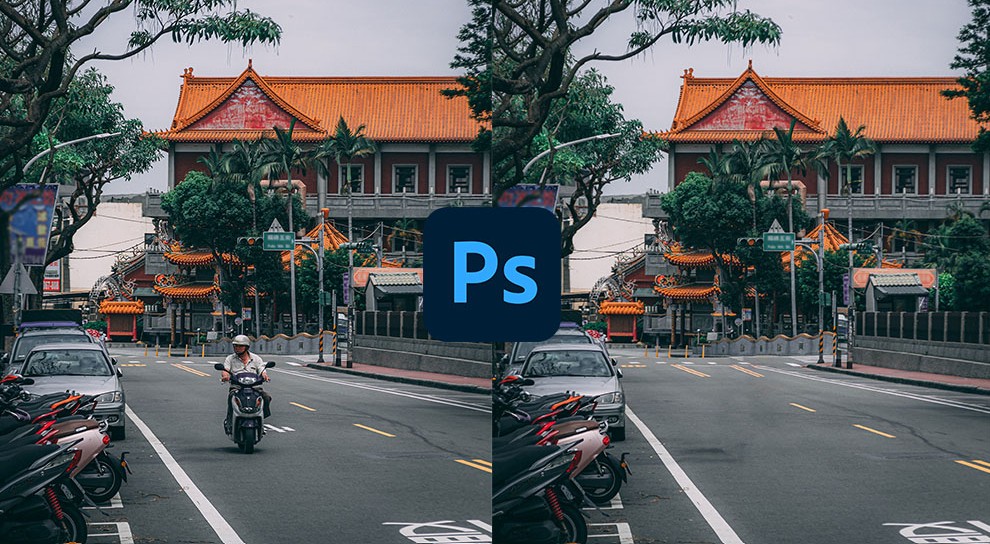Best Selling Products
Instructions on How to Calculate Proportions in Design
Nội dung
- 1. Why should we apply and calculate proportions in layout?
- 2. How to apply and calculate proportions in layout?
- 3. How to apply and calculate proportions in layout
- 4. Determine the ratio in the layout
- 4.1 Paper size
- 4.2 Applying the repetition rate
- 4.3 Continue to divide the distances
- 4.4 Incorporating the golden ratio in design
- 5. Golden ratio standard design tool
- 5.1 Canva
- 5.2 Photoshop
- 6. Conclusion
Proportion is one of the most important elements in design, affecting the way viewers perceive and interact with a product. Whether it is graphic design, architecture or fashion, proportion helps create balance and harmony in the composition. In this article, Sadesign will explore with you how to calculate proportion in detail, from basic principles to practical applications, helping you improve your design skills.

Proportion is one of the most important elements in design, affecting the way viewers perceive and interact with a product. Whether it is graphic design, architecture or fashion, proportion helps create balance and harmony in the composition. In this article, Sadesign will explore with you how to calculate proportion in detail, from basic principles to practical applications, helping you improve your design skills.
1. Why should we apply and calculate proportions in layout?
In design, the application and calculation of proportions not only contribute to creating harmony but also directly affect the viewer's perception. When working spontaneously, many designers often place elements without clear calculations, leading to layouts that are not "pleasing to the eye". Proportions help us determine the size and position of elements, thereby creating a more balanced and easy-to-see design.
Proportional numbers like 1.2, 1.414, 1.618, 1.84 are not rigid rules for arrangement. Instead, they are supporting tools, helping designers shape the layout in a more logical and scientific way. By using these ratios, you can easily answer questions like: What size is appropriate? What position will create balance? Or how much space should be between elements to create connection?
Applying proportions to your designs takes practice and familiarity. While it may take some getting used to with numbers at first, once you get the hang of it, you’ll find that calculating proportions becomes a natural part of your design process. This will not only help you create beautiful products, but will also build a habit of rigorous and effective design thinking.
.png)
2. How to apply and calculate proportions in layout?
When it comes to applying proportions to your layout, you can use common ratios like 1/1.618 (the golden ratio) and 1/1.84 (the repeating ratio). The golden ratio is a great tool for determining the size of elements in your design. For example, if you have an initial size, simply multiply by 1.618 to find the next size, creating a more harmonious and logical layout.
The 1/1.84 ratio is often used to calculate the spacing between elements. By multiplying the initial spacing by 1.84, you can determine the next spacing in the layout. This is useful when you want to create a connection between elements while still keeping the design airy.
To make it easier to note down and calculate, you can use symbolic numbers like 20, 37, 68. These numbers are created using the 1.84 ratio, which makes them easy to apply in practice. For example, if you decide that the first dimension is 20cm, you can calculate the next dimension quickly and efficiently.
3. How to apply and calculate proportions in layout
Starting with a specific example, arrange the image and text positions according to your initial idea. Once you have a general draft, you will proceed to calculate and adjust the size and position of the elements according to the chosen proportions.
Choosing the right proportions is important in this process. You can choose whatever proportions you feel will work best for your composition. Remember that proportions are just tools, the final decision is yours. Arranging elements in proportion will help you create a composition that is not only pleasing to the eye, but also balanced and harmonious.
Once you know the position and size of your elements, it becomes easier to adjust and optimize. You can experiment with different proportions to find the perfect layout for your design. Over time, you’ll develop an intuition for applying proportions, making the design process quicker and more efficient.
.png)
4. Determine the ratio in the layout
4.1 Paper size
When starting a design, the first and most important factor to determine is the page size. Standard sizes such as A3, A4, A5 are all defined by a ratio of 1:1.414, a ratio that has been shown to create balance and harmony in design. However, depending on your purpose and style, applying other ratios is also an interesting option.
For example, if you want to create a poster that is taller than it is wide to attract attention, you can use the ratio 1/1.618, also known as the golden ratio. If you decide the width of the poster is 18 cm, the height would be calculated by multiplying by 1.618:
18 cm × 1.618 ≈ 29 cm.
Thus, the overall size of the poster will be 29 cm x 18 cm. Determining the size of the paper scientifically not only helps you have a clear layout but also creates appeal to the viewer at first sight.
.png)
4.2 Applying the repetition rate
Once you have the page size, the next step is to determine the proportions of the elements in your layout. To do this, you need to space elements proportionally, which helps create balance and harmony.
Let's say you want to design a layout with a girl image as the focal point, followed by a product image, and a blank space in between. To draw attention, the girl image should be the largest, followed by the product image, and the smallest space between them should be the blank space.
Method 1: Use the ratio 20:37:68
You can use the 1/1.84 ratio to calculate distances. The numbers representing this ratio are 20, 37, and 68. The sum of the parts will be:
20 + 37 + 68 = 125 parts.
The width of the page is 29 cm, so each section will have the following dimensions:
29 cm / 125 ≈ 0.232 cm.
From there, you can calculate the specific dimensions for each part:
20 parts: 0.232 × 20 ≈ 4.6 cm.
37 parts: 0.232 × 37 ≈ 8.6 cm.
68 parts: 0.232 × 68 ≈ 15.8 cm.
Method 2: Use the 1.84 ratio directly
In addition to the 20:37:68 ratio, you can use the 1.84 ratio to calculate the spacing between elements. This way, you will have:
First size: 29 cm.
Next size: 29 cm / 1.84 ≈ 15.8 cm.
Next size: 15.8 cm / 1.84 ≈ 8.6 cm.
Final size: 8.6 cm / 1.84 ≈ 4.6 cm.
Using the 1/1.84 ratio is convenient for dividing distances into equal parts, but if you need to divide in another ratio like 20:37:37, it's easier to divide the total length by the total ratio.
.png)
4.3 Continue to divide the distances
Once you have applied the horizontal proportions, the next step is to adjust the vertical spacing. You can apply the same process with a 1/1.84 repetition ratio to ensure that all the elements in your layout are in harmony and similar.
Determining the proportions of elements in a layout not only helps you create a beautiful product but also improves your design thinking ability. Once you are familiar with proportions and how to apply them, you will be more confident in adjusting and creating, thereby bringing about more impressive and professional layouts.
This way, you not only create designs but also develop your skills, making you a better designer in the future.
4.4 Incorporating the golden ratio in design
When designing, applying the golden ratio (1/1.618) can help you create balance and harmony for elements in your layout. In a specific case like calculating the position of a beer bottle and a glass, the golden ratio allows you to determine the size more precisely and reasonably than other ratios.
For example, if the total width for the beer bottle, the space, and the glass is 5.6 cm, you can use the formula to calculate the width for the glass. The width for the glass will be the total width divided by the total ratio:
Width for the cup = 5.6 cm / (1 + 1.618) ≈ 2.14 cm.
The remaining width for the beer bottle and the space will be 5.6 cm - 2.14 cm ≈ 3.46 cm.
Next, to divide the beer bottle and the space, you can choose a ratio of 68:20. From there, you can calculate the specific size for each part.
The width for the beer bottle would be 68 x (3.46 cm / 88) ≈ 2.67 cm, while the width for the gap would be 20 x (3.46 cm / 88) ≈ 0.79 cm.
By applying the golden ratio flexibly, you can create layouts that are not only beautiful but also balanced and intuitive, helping your design products stand out and attract viewers.
5. Golden ratio standard design tool
5.1 Canva
Canva is one of the most popular online design tools available today, with a friendly and easy-to-use interface. One of Canva's strengths is its ability to apply design ratios, including the golden ratio (1/1.618), which is important for creating attractive and balanced layouts.
When you start designing with Canva, you can choose from hundreds of pre-made templates, saving you time and effort. What's more, Canva allows you to customize the page size according to the golden ratio. For example, if you want to create a poster or promotional image, you can set the size according to the golden ratio by specifying the appropriate width and height.
Canva’s drag and drop feature is great for adjusting the position of elements on the page. You can easily move images, text, and other elements around according to the golden ratio to create a harmonious layout. A quick tip is to use the grids and guides available in Canva to ensure that the elements are arranged according to the golden ratio. This not only makes it easier to create a balanced design, but also enhances the aesthetics of the final product.
Canva also offers sharing and collaboration features, allowing multiple people to work on the same project. This is useful in team environments, where applying the golden ratio may require consensus from multiple members. You can get immediate feedback and adjust your design based on everyone’s input.
Canva also supports a wide range of export formats, from images to PDFs, making it easy to share your finished product with others. Exporting to the golden ratio ensures that your design doesn’t look distorted or out of proportion when printed or displayed on different platforms.
.png)
5.2 Photoshop
Photoshop is one of the world's leading graphic design software, famous for its ability to edit images and design complex layouts. Applying the golden ratio (1/1.618) in Photoshop can help you create impressive works of art and design, with high precision and superior aesthetics.
When working in Photoshop, you can easily set up your canvas size according to the golden ratio. By entering the corresponding width and height parameters, you can create the perfect workspace for any project. For example, if you want to create a book cover, you can calculate the corresponding dimensions to ensure that the final product will be in the golden ratio.
Photoshop also provides tools that make it easy to apply the golden ratio to the arrangement of elements. You can use grids and guides to divide your canvas into sections that correspond to the golden ratio. This will help you determine the ideal placement for elements such as text, images, and icons, creating a harmonious and attractive layout.
Another great feature of Photoshop is the ability to edit layers. You can create multiple layers for different elements in your design and adjust their size and position flexibly. This allows you to experiment with different proportions without affecting the overall design. If you feel that an element does not fit the golden ratio, you can easily adjust it without having to re-edit the entire layout.
Additionally, Photoshop supports exporting files in a variety of formats, from high-quality images to print-ready PDFs. This is important, as exporting files to the golden ratio ensures that your designs don’t look distorted when used on different platforms.
.png)
6. Conclusion
Proportions in design are not only a technique but also an art. Understanding and applying proportions correctly will help you create impressive and attractive design products. By mastering the principles and formulas involved, you will be able to create perfect layouts, bringing great experiences to users. Remember, proportions are not just numbers but also reflect the creativity and aesthetic sense of each designer.












































